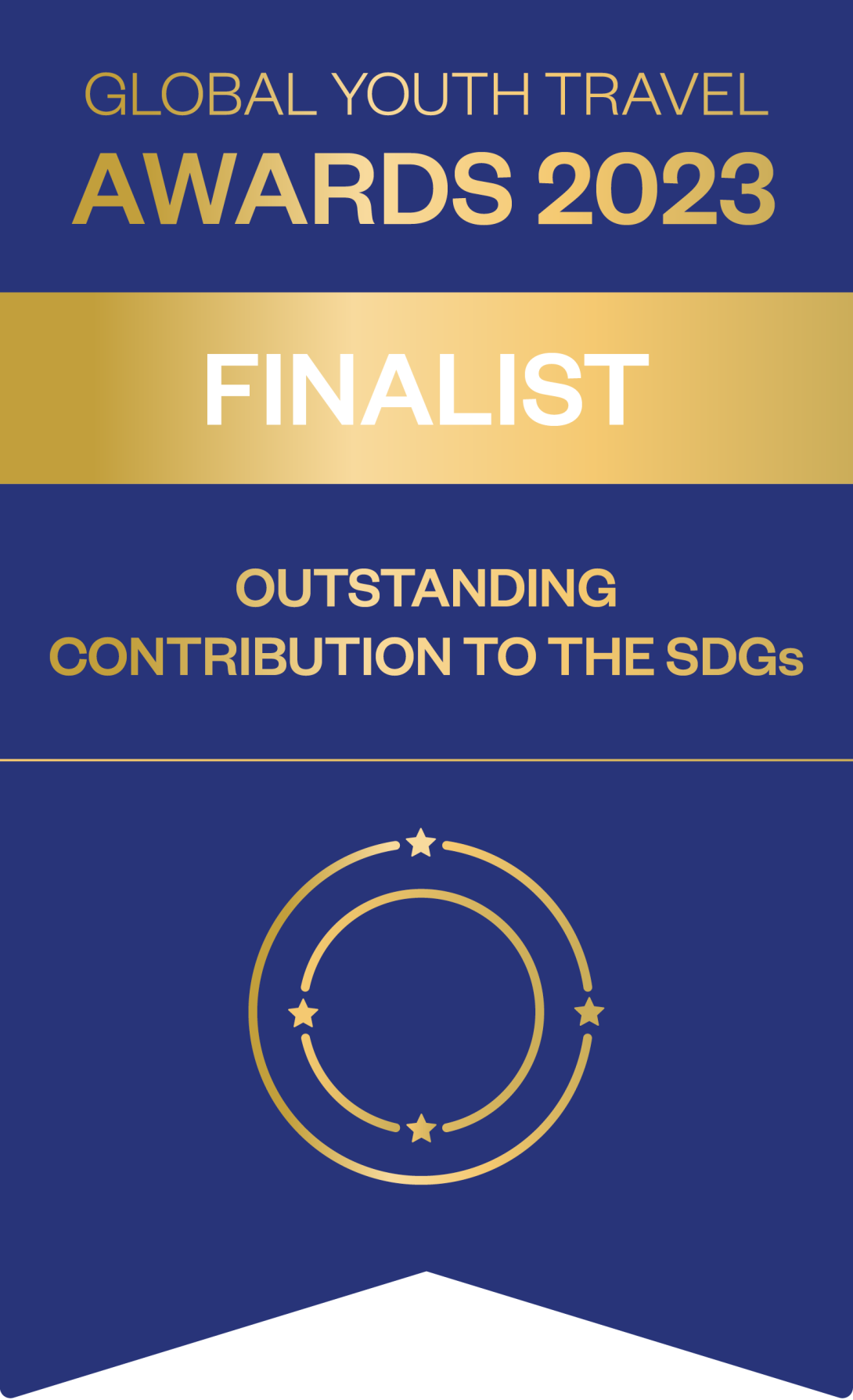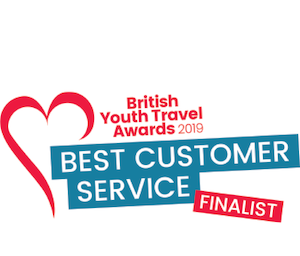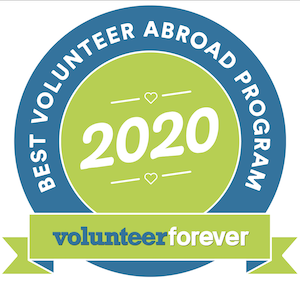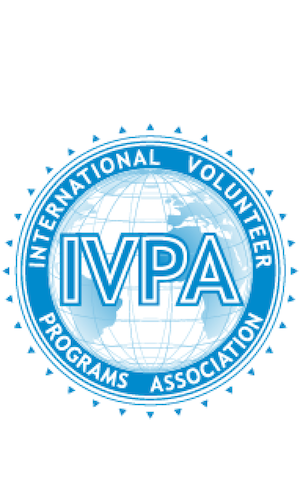This is the year you’ll travel Latin America while volunteering abroad. You have everything in order: your passport, flights and visa… everything, except your bags. And then you realise you don’t know what kind of shoes you’d pack. Do you need to pack towels? Shampoo and soap? It’s too much to think about!
Going through a travel packing list is always stressful, but we’re known for our hassle-free approach. That’s why we asked for packing suggestions from our local staff in Latin America so you can be 100% ready for your volunteer adventure.
We love going the extra mile for our volunteers and interns. Read to the end for a gift that’ll make your packing process even easier.
So let’s go full Monica Geller from Friends, and prepare yourself for packing!
A quick guide to packing the basics for Latin American countries
Before taking you through the things you’d pack for your chosen destination, let’s go through some basics:
-
Universal adapter. Unless you want to be disconnected from your friends and family, you need to bring a universal adapter to charge your mobile phone or laptop.
-
Sunblock, sunglasses and a hat. It’s important to protect yourself from the sun, especially because the UV rays may be stronger than you’re used to!
-
Bug spray. This is especially important if you’ll be based close to the beach or vegetation rich areas.
-
Trainers. You’ll spend a lot of time on your feet. You need to be comfy while hiking, climbing Mayan ruins or just exploring the city.
-
Reusable bottle water. Instead of buying bottled water over and over again, pack a reusable durable bottle water from home. We provide you with clean drinking water that you can refill it with. It’ll keep you hydrated and protect our oceans at the same time!
And last but not least: bring cash with you. Paying with credit or debit cards abroad will add you extra costs and can be unsafe, as Lucila, our Volunteer Coordinator in Argentina, points out:
“Moving around the city with cards maximizes the risk of loss (in some cases, the ATM was locked and the card was no recovered). It’s just annoying to carry out the necessary procedures to report the loss and receive a new card”.
- Lucila Bazán, Volunteer Coordinator in Argentina

What should I pack for Argentina?
If you joined a volunteer project during summer, just remember that the seasons might be different from yours in the Southern Hemisphere.
Keep these seasons in mind when preparing your packing list for Argentina:
-
Summer: December to March. Summer is very hot (we’re talking about 40ºC sometimes!), so bring light clothing.
-
Winter: June to September. You need warm clothes: scarf, gloves, long-sleeved shirts and a jacket.

What should I pack for Costa Rica?
When preparing your Costa Rica packing list you need to take into account if you’ll travel during the rainy season (May to November). If so, Costa Rica staff member, Jessica Brenes, suggests you pack closed shoes and a raincoat.
If you join our Conservation Project, Daniel Segura, our Conservation Manager suggests:
-
A mosquito net to keep you safe from mosquitoes at night
-
A headlamp
-
Hiking boots
-
A camera and binoculars (these are optional)
And while you'll be working in a tropical dry forest, we assure you that the weather is not dry at all. Don’t forget your deodorant!

What should I pack for Ecuador?
Get your inner Charles Darwin ready to explore the Galapagos Islands. Our Country Director, William Puga, suggests you add to your packing list for Ecuador a pair of hiking shoes and work clothes if you’re joining our Conservation Project. In his own words: you will get dirty!
Our Conservation Manager, José Luis, agrees with William on the hard work part. Rubber rain boots (sometimes called wellington boots) and work gloves come in handy while working in the Galapagos National Park.
About the clothing; bring some light coloured long sleeved tops and trousers and a windbreaker jacket. And if you’re into marine sports, don’t forget your snorkelling equipment!

What should I pack for Jamaica?
In your packing list for Jamaica remember to add light and comfortable clothing. Our Country Director, Kay Hendricks, assures you that this’ll be useful for your weekend activities while touring this beautiful island.
While volunteering abroad you’ll be surprised about how many things are different from home. That’s why you should listen to our staff suggestions and bring a pair of flip flops (or thongs) with you:
“In Jamaica, it’s not polite to wear outside shoes in the homes, so you will need a pair of flip flops”.
- Sanikia Powels, Head Office Coordinator for Jamaica
And don’t forget your swimwear, as you’ll definitely love swimming in the warm Caribbean waters!

What should I pack for Mexico?
Do you have your sombrero on your Mexico packing list? This is actually a great idea! Guadalajara is very sunny, so add a hat and some cool sunglasses too. However, the rainy season (June to August) is also a big deal, so you should pack a raincoat and rain boots.
Leti Cano, our Volunteer Coordinator, has specific advice for interns on our Medicine Project:
“It’s very important to bring white clothes and a white lab coat. Otherwise, the hospitals won’t let our interns to continue until they are dressed like this. Also, bring your scrubs! Is not hard to pack them and you have to bring them every day to the hospital”.
- Leticia Cano, Volunteer Coordinator in Mexico
If you are joining our Sea Turtle Conservation Project, follow some suggestions from Pablo Lobera, our Conservation Manager, and bring some closed, comfortable, non-slip shoes, some sweaters for the night patrols and binoculars: “these are not essential, but it helps a lot, especially if you are a wildlife lover”.


What should I pack for Peru?
When preparing your packing list for your project in Peru, you have to consider the city you’ll be based in. Our Volunteer Advisor for Peru, Elvira Rosemberg, points out that while Cusco has dry weather, Puerto Maldonado is hot and humid.
If you’re heading to Cusco, you’ll need:
-
Closed, comfortable, non-slip shoes
-
Lip balm
-
Humectant cream to avoid dry, chapped skin on your hands and body
-
A warm jacket
If you’re working on the Amazon Rainforest Conservation Project in the Taricaya Ecological Reserve, you need:
-
Light trousers
-
A long-sleeve shirt
Elvira also says you should pack a lantern for the Conservation Project:
“At night it could be activities like night walks, and electricity is obtained with a generator, which is turn off at 8-8:30 pm”.
- Elvira, Volunteer Advisor
Joining our Archaeology internship? Don’t forget to pack a bucket hat and soft gloves!
Now that you’ve left behind the packing anxiety, you’re more than ready for your volunteer project in Latin America. Once you finish with packing, you’ll feel your excitement grow.
After adding your towel and pyjamas to your bag, please don’t forget to bring with you the most important thing: a great attitude to help making a better world!
Don’t forget your gift!
As an added extra, we’ve prepared an Ultimate Travel Checklist that you can download and print to tick-off as you go.
Now you only need to step onto the plane!
Want to know more about our Projects in Latin America?
Get in touch with our Project Experts. They’ll be happy to answer any questions you may have.
Our accreditations



















